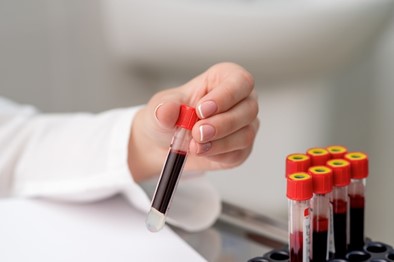An arterial blood gas (ABG) test is a crucial diagnostic tool to assess the levels of oxygen and carbon dioxide in your blood, as well as the acidity of your blood, known as your acid-base balance or pH level. This test involves drawing a blood sample from an artery, which carries oxygen-rich blood from your lungs to your body.
Why is an ABG Test Necessary?
An ABG test helps in several ways:
Assess Acid-Base Balance: It evaluates your body’s acid-base balance, which is essential for the proper functioning of your organs. Even slight imbalances in acidity or alkalinity can have serious consequences.
Diagnose Respiratory Issues: ABG tests are instrumental in diagnosing respiratory problems by assessing how well your lungs are oxygenating your blood and removing carbon dioxide.
Identify Kidney Disorders: The test can also help identify kidney disorders, as both the lungs and kidneys play crucial roles in maintaining acid-base balance.
Monitor Treatment: It helps healthcare providers monitor the effectiveness of treatments for respiratory disorders, kidney diseases, and other conditions affecting acid-base balance.
When Might You Need an ABG Test?
You may need an ABG test if you experience symptoms such as,
- Uncontrolled rapid or deep breathing
- Nausea
- Vomiting
- Irregular heartbeat
- Confusion
- Fatigue, or muscle twitching
- Cramps
Additionally, if you have respiratory conditions like asthma, COPD, cystic fibrosis, or myasthenia gravis, or if you have experienced carbon monoxide poisoning or inhalation injuries, an ABG test may be necessary. Patients receiving oxygen therapy may also require this test.
What to Expect During the Test?
During an ABG test, a small sample of blood is drawn from an artery, typically from the wrist. Before the procedure, a numbing medicine may be applied to minimize discomfort. The blood sample is collected using a needle and syringe, and pressure is applied to the site afterward to stop bleeding.
Understanding the Results
ABG test results provide valuable information about your blood’s oxygen saturation, pressure of oxygen and carbon dioxide, and acid-base balance. Your provider will interpret these results, which may indicate respiratory or kidney issues, metabolic disorders, or medication effects. Abnormal results often require further testing for diagnosis.
Risks and Considerations
While ABG tests are generally safe, there may be minor risks such as bleeding, bruising, or soreness at the puncture site. In rare cases, nerve or artery damage may occur. Patients may be advised to avoid heavy lifting post-test.
Alternative Tests
Pulse oximetry is an alternative to ABG tests for assessing blood oxygen saturation levels. It involves attaching a device to your finger to measure oxygen levels in your blood. However, ABG tests offer more comprehensive insights into blood gases and acid-base balance.
Arterial blood gas (ABG) tests play a vital role in diagnosing and monitoring respiratory and metabolic disorders, kidney diseases, and acid-base imbalances. Understanding the purpose, procedure, and significance of ABG tests can empower patients to actively participate in their healthcare journey and collaborate effectively with their doctors for optimal health outcomes.



